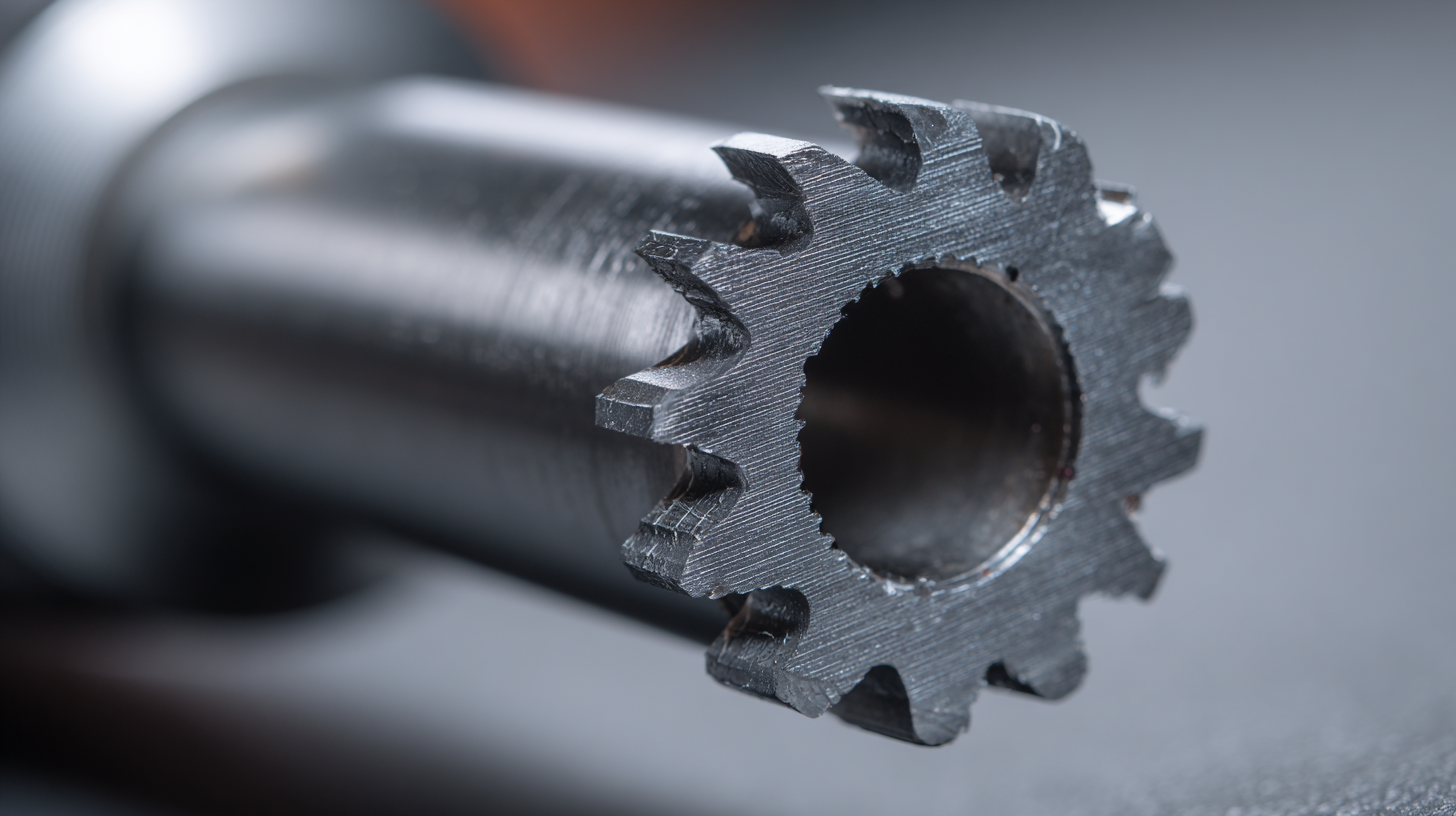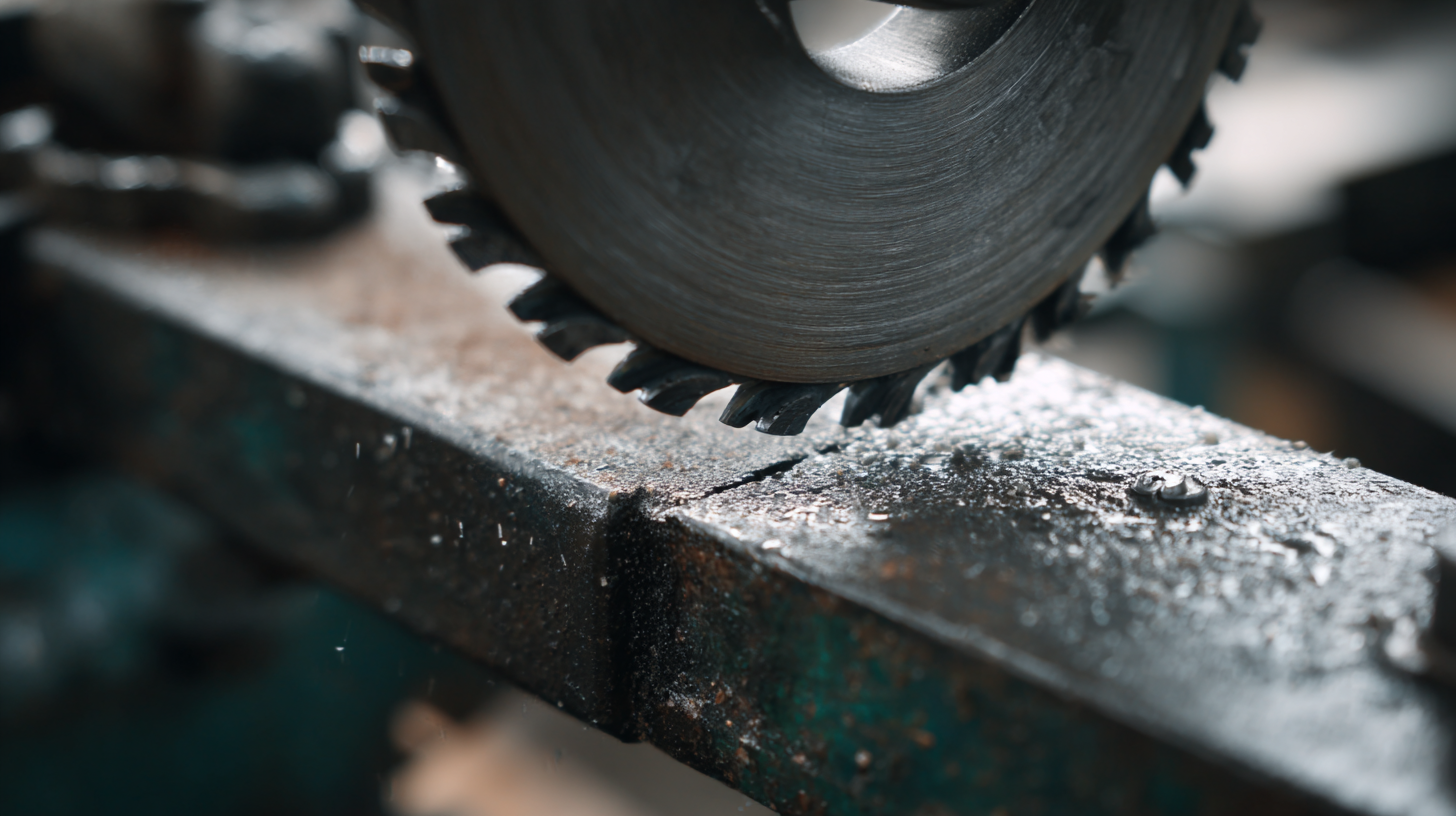How to Maximize the Value of Your Best Metal Hole Saw with Cost Effective After Sales and Maintenance Solutions
In the competitive landscape of metalworking, the effectiveness of tools such as the Metal Hole Saw plays a critical role in enhancing productivity and operational efficiency. Recent industry reports indicate that improper maintenance and underutilization of tool capabilities can lead to a staggering 30% increase in operational costs over time. By investing in cost-effective after-sales and maintenance solutions, businesses can not only extend the lifespan of their best Metal Hole Saws but also ensure optimal performance. Implementing structured maintenance schedules and leveraging professional support services can yield significant cost savings, estimated at up to 20% annually. This blog will explore innovative strategies to maximize the value of your Metal Hole Saw, ensuring it remains a profitable asset in your toolkit.

Maximizing Performance: Understanding the Lifecycle of Your Metal Hole Saw
Understanding the lifecycle of your metal hole saw is crucial for maximizing its performance and longevity. According to a report by the Industrial Supply Association, proper maintenance can extend the life of high-quality metal cutting tools by up to 30%. Regular cleaning and lubrication not only keep the saw in optimal condition but also improve cutting efficiency, reducing downtime and operational costs.

Moreover, as metal hole saws experience wear over time, it’s essential to monitor their performance closely. A study by the Metal Cutting Institute found that 60% of tool failures result from inadequate maintenance practices. By scheduling routine inspections and utilizing cost-effective aftermarket solutions, such as resharpening services, users can achieve better precision and performance, minimizing the need for costly replacements. This proactive approach ensures that your investment yields its maximum potential, driving both productivity and profitability.
Essential After-Sales Services: What to Look for in a Provider
When investing in a high-quality metal hole saw, understanding the importance of after-sales services is crucial for maximizing its value. Essential services may include routine maintenance, repairs, and timely access to replacement parts. When choosing a provider, look for one that offers comprehensive technical support to help troubleshoot any issues that may arise during operation. A proactive customer service team can guide you through proper use and maintenance protocols, ensuring you get the most out of your investment.
Another key factor to consider is warranty and service agreements. A reliable provider should offer a warranty that covers both manufacturing defects and reasonable wear and tear. This not only protects your initial investment but also ensures you have access to service experts who can quickly address any challenges. Furthermore, consider the provider's reputation and experience in the market. Feedback from other users can provide insights into their responsiveness and overall service quality, helping you make an informed decision that enhances the longevity and performance of your metal hole saw.
Cost-Effective Maintenance Tips to Extend the Life of Your Hole Saw
When it comes to maximizing the lifespan of your metal hole saw, cost-effective maintenance is key. Regularly inspecting your tool for wear and tear can prevent premature failure. One of the easiest tips is to always keep the cutting edges sharp. Dull edges not only increase the strain on the tool but also lead to poor cutting performance, which can escalate replacement costs. A sharpening stone or a bench grinder can be an invaluable investment for maintaining the integrity of your hole saw.
Another essential tip is to use the right cutting fluid. Lubrication reduces heat generation during cutting, which can significantly extend the life of your hole saw. Opt for a water-soluble coolant or a cutting oil, depending on the material you are working with. Moreover, ensure that you're operating at the correct speed and feed rate, as this greatly influences the hole saw's effectiveness and durability. Taking the time to find the right settings can lead to smoother cuts and less wear on your tool. With these simple maintenance steps, you'll not only save money but also enhance the productivity of your projects.
How to Maximize the Value of Your Best Metal Hole Saw
Innovative Upgrades: Enhancements to Boost Your Hole Saw's Efficiency
When it comes to maximizing the efficiency of your best metal hole saw, innovative upgrades can make a significant difference. Reports indicate that using high-quality, specialized coatings can increase the lifespan of cutting tools by up to 30%, enhancing their performance in demanding applications. Upgrades such as advanced tooth geometry and variable pitch designs can reduce cutting resistance, leading to a smoother operation and improved hole precision. By implementing these enhancements, you not only optimize your processes but also achieve a higher return on investment.
Tip: When selecting a hole saw, consider investing in one with a carbide-tipped design. Studies show that these can endure higher temperatures and abrasive materials, which translates to longer operational life and lower replacement costs.
Another effective strategy is to regularly maintain your hole saws with proper cleaning and lubrication techniques. According to industry experts, a well-maintained tool reduces wear and tear by approximately 20%. Moreover, using a dedicated storage solution can protect the saws from environmental factors that cause corrosion.
Tip: Create a maintenance schedule to inspect and clean your hole saws frequently. This proactive approach can prevent costly damages and ensure peak performance during your projects.
Industry Trends in 2025: Anticipating Changes in Metal Hole Saw Technologies
As we approach 2025, the metal hole saw industry is on the brink of transformative innovations. One notable trend reshaping the landscape is the integration of advanced materials and coatings in the production of hole saws. Manufacturers are increasingly experimenting with high-performance alloys and diamond coatings, which significantly enhance durability and cutting efficiency. This shift not only prolongs the lifespan of the tools but also reduces the frequency of replacement, translating to cost savings for users.

Another key trend to anticipate is the rise of smart technology embedded in metal hole saws. With the advent of IoT, manufacturers are developing tools equipped with sensors that provide real-time data on usage, performance, and maintenance needs. Such technologies empower users to adopt a proactive maintenance approach, optimizing both productivity and tool longevity. As these innovations continue to evolve, they will undoubtedly drive the future of metal hole saw technology, making it essential for professionals to stay informed and ready to adapt to these advancements.